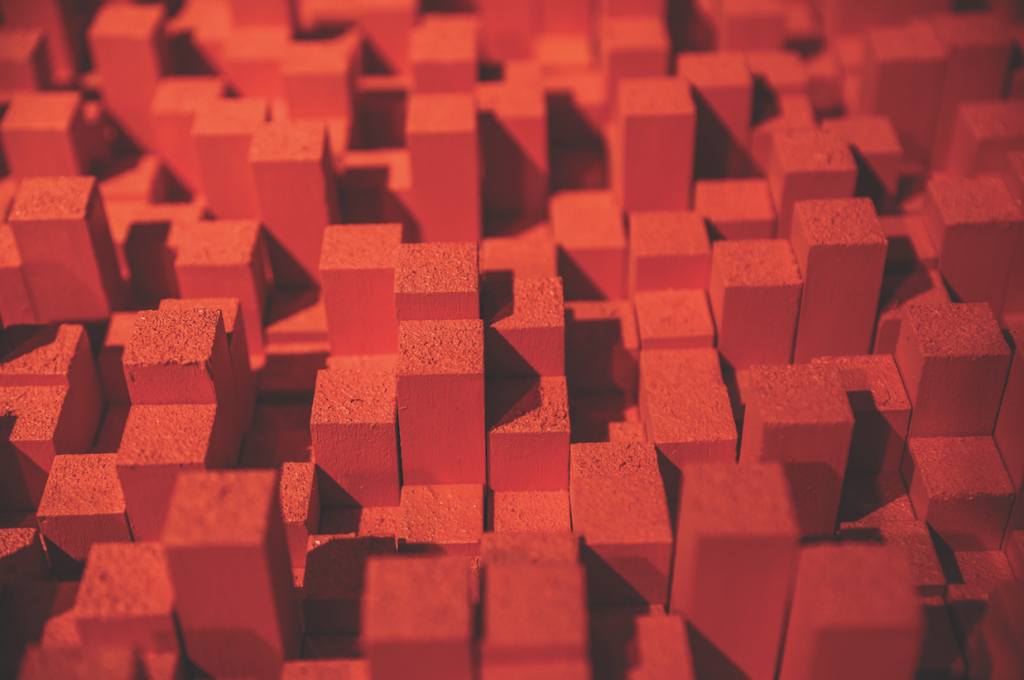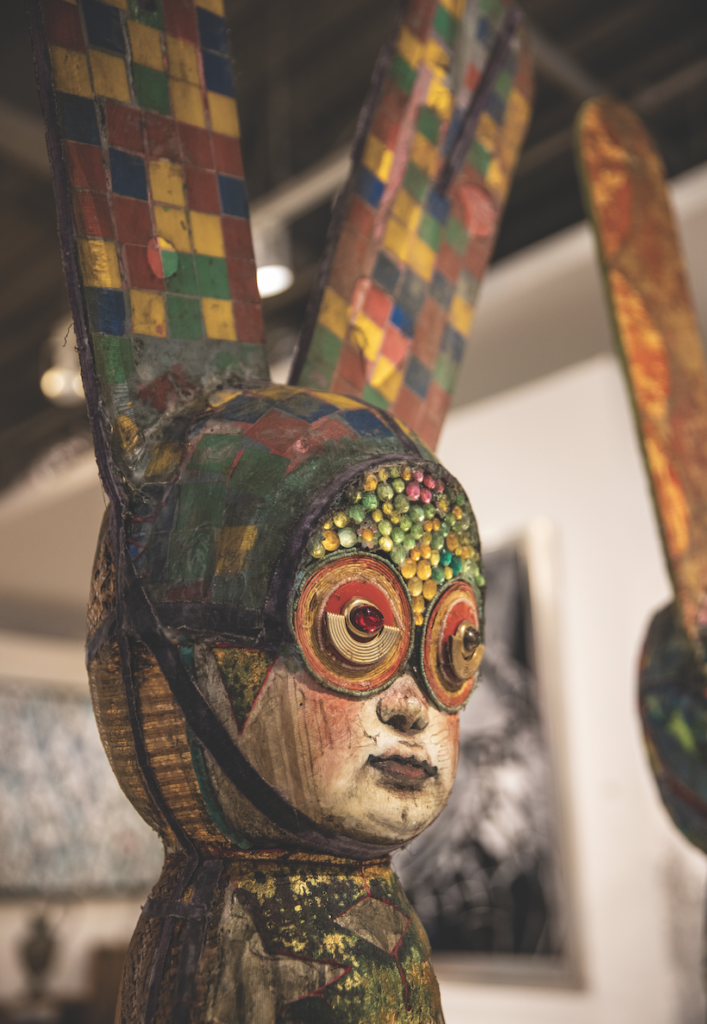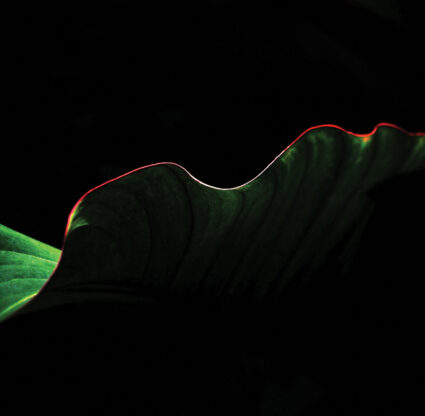Contemporary art galleries can be overwhelming, even for the most sophisticated collectors. But Aldo Castillo has made it his life’s mission to make people feel at ease, even as they’re surrounded by provocative sculptures, paintings and digital installations. He showcases the work of international artists like Augusto Esquivel, Enrique Machado and Metis Atash in open settings where viewers are invited to take their time with each piece and get a sense of the story that inspired it. But it’s not just the excellent curation and display that draws people to Castillo’s two eponymous galleries—a 1,800-square-foot space in Naples and eight individual spaces at Miromar Design Center in Estero. In a business that thrives on cool detachment, the owner has built a reputation for his generosity, warmth and a personality that’s just as colorful as the Machado resin-and-silicone paintings he deals with.
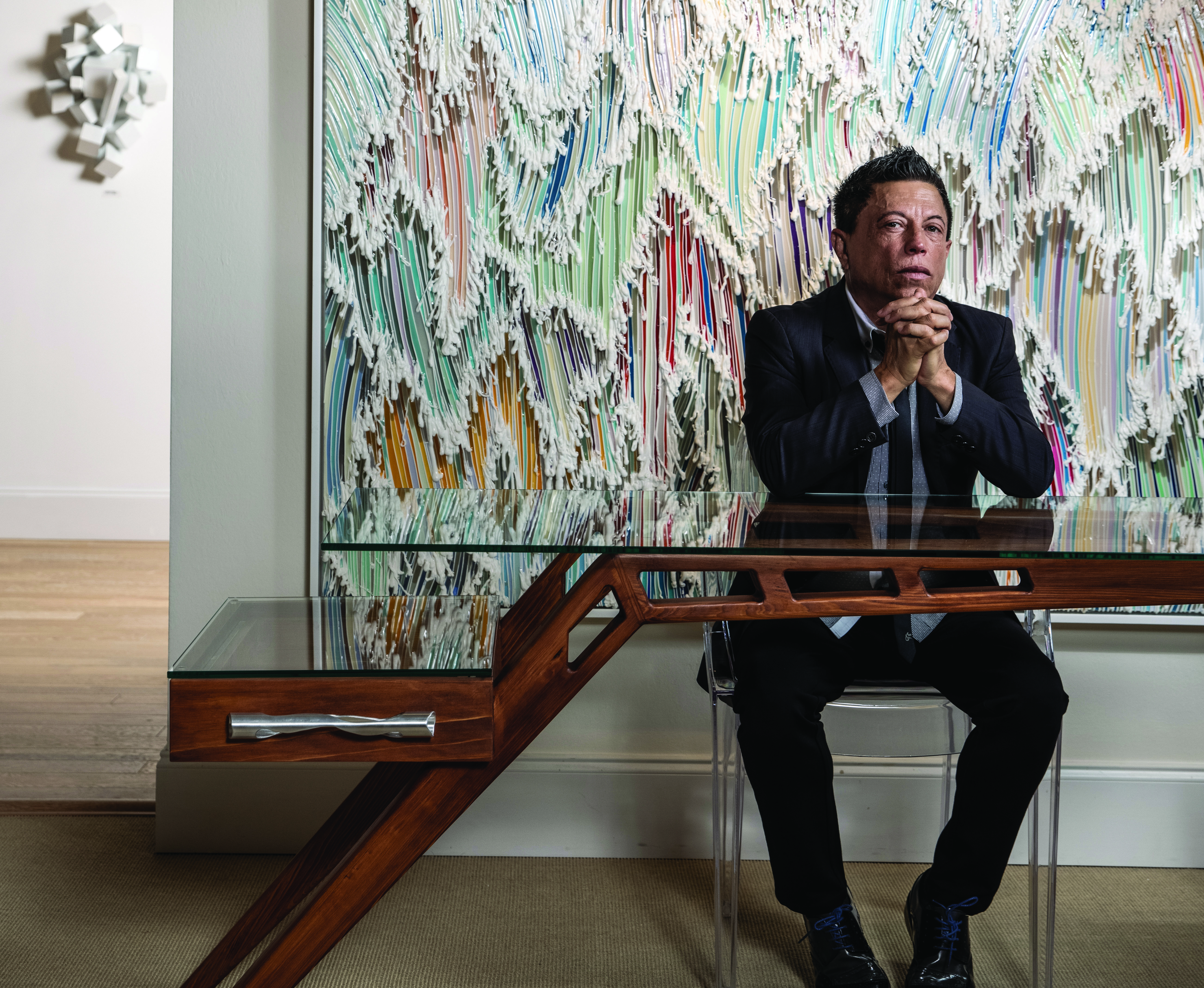
Recently, visitors to his newer Fifth Avenue South space have been immediately drawn to Seeing in a New Light, a digital work by Jorge Brinkerhoff. It features 65,536 light-emitting diodes that Brinkerhoff uses to activate familiar static forms—a portrait of Marilyn Monroe, for example—in a way that alters how viewers receive them by changing the color, definition, intensity and duration of the display. He reconceptualizes the common with digital color-field imaging. Then there’s the work of Miami-based Esquivel, which captivates viewers with thousands of buttons that are threaded on monofilament strings suspended from an acrylic structure. While the medium is a nod to his grandmother, the subjects are purely 21st century with elements of pixilation, pop culture, obsessive-compulsive disorder, the immigrant experience and capitalism.
The latter topics are particularly germane to Castillo, who grew up in Nicaragua, spending hours sketching houses, historical sites and, perhaps most fittingly, a series of sleek planes. “I decided that the world was my home, and the airplane symbolized that idea,” he says. Because he had high hopes for a jet-set future at a young age, he leapt at the chance to participate in a foreign exchange program when he was 15 and spent a semester in Wisconsin. There, he became enthralled with woodworking, which allowed him to create three-dimensional models of his sketches. That skill opened Castillo’s mind to architecture, and he went abroad again at age 17 to study the profession at the Universidad de San Carlos, then later at the Universidad Rafael Landívar, both in Guatemala City.

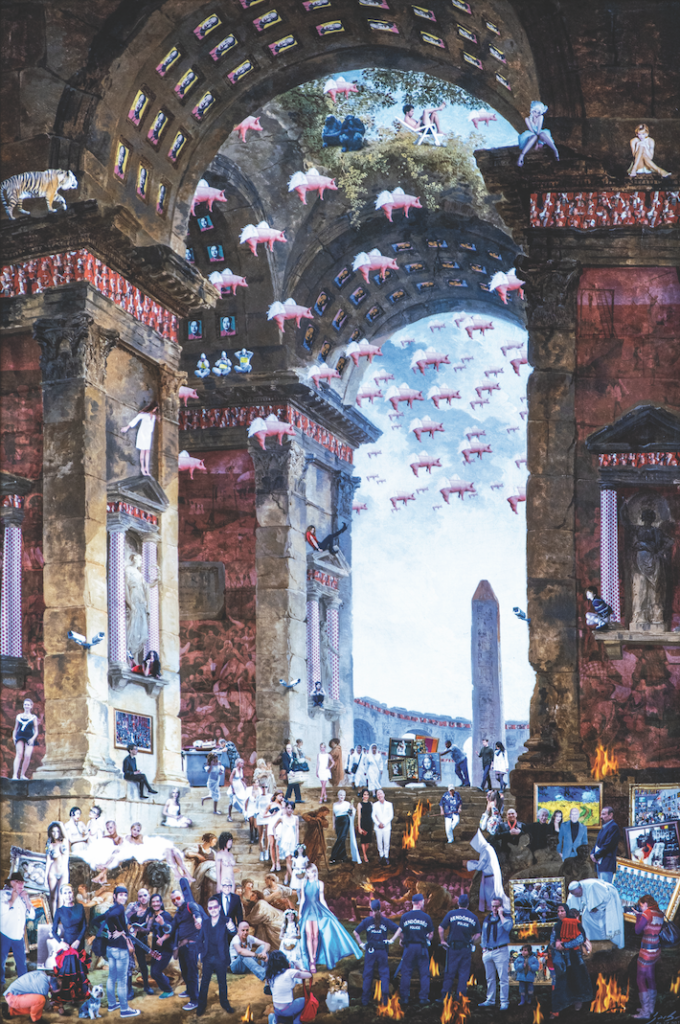
Even as he studied, Castillo continued to focus on art. He studied ceramic in Lima, Peru, and he served as both curator and graphic designer at Guatemala City’s Museo Popol Vuh, which has one of the largest collections of Mayan art in the world. The experience drove home the importance of art history. “People create art to report,” he says. “The difference between news and art is that artists find beauty in everything, and the viewer has the last word.”
Castillo headed to Chicago in the mid-1980s and received a scholarship to the School of the Art Institute of Chicago after living there for a year. Unable to return home because of the ongoing Iran-Contra scandal, he applied for political asylum in the United States—a process that took seven years. “It was a very dark and painful time in my life,” he explains, noting he was unable to complete his fine arts education. But he took comfort in the city’s energy and the thriving, innovative art scene, which made it an exciting place for a young artist to be. He formed deep relationships with a number of artists and became active in the LGBTQI+ community.
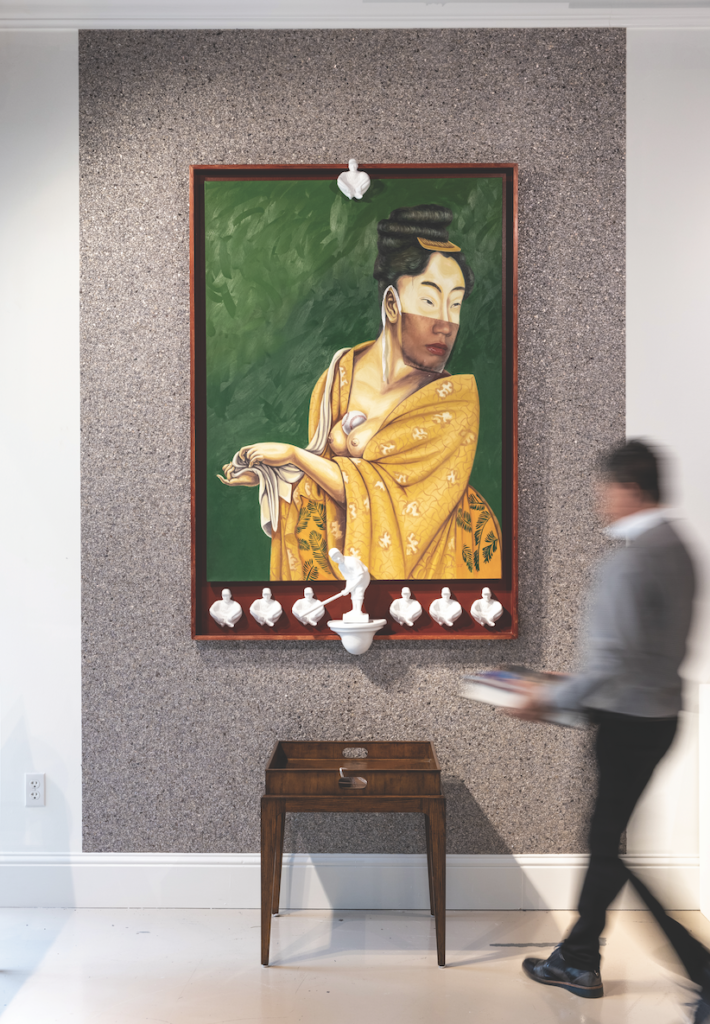
Activity turned to activism once the AIDS pandemic exploded and began claiming the lives of many of his closest friends. “I realized that activism was a card we all needed to play,” Castillo says. “And art is such a beautiful, intelligent model for us to expose all the issues that need to be fixed.” Being so far from home and in a city with segregated neighborhoods, Castillo also became painfully aware that while America was certainly diverse, it wasn’t quite the melting pot that he heard people go on about. “It’s the first time I had the Latino label,” he says.
In 1993, he opened his first gallery in Chicago. His mission: Spark conversation, break down boundaries and educate the public about Latin American culture. It soon became renowned for its mix of innovative works by artists such as Rufino Tamayo, Luis González Palma, Maria Bonomi, Jesús Cobo and Carlos Colombino. The success of the gallery gave Castillo a platform to increase awareness about HIV/AIDS, lobby politicians and serve on the board at the AIDS Foundation Chicago. In 2003, he launched the Aldo Castillo Arts Foundation, a nonprofit organization that promoted diversity among emerging and established artists around the world. Two years later, he was inducted into The Chicago LGBT Hall of Fame.


By 2011, Castillo was feeling increasingly stifled and eager for a new challenge, so he closed up shop and headed south to become the associate director of the Miami International Art Fair—one of many fairs he has led through the years. Life in South Florida gave him a creative jolt he hadn’t felt in years. “When you live in a place that is so beautiful and comfortable like Chicago, there’s less risk-taking,” he explains. “When I went to Miami, I saw how contemporary art was being created using some of the latest technology.”
Eager to introduce his own mix of digital and analog media, that same year Castillo headed for Southwest Florida and opened the Estero gallery. He chose the region because it was “evolving with new people moving from New York and Los Angeles, as well as global residents,” he says. “With that comes a high demand for contemporary art.” Almost 10 years later, during the height of the pandemic, he opened a sister location on Fifth Avenue South in downtown Naples. He explains that the uncertainty of the pandemic awakened a hunger in many collectors for art by progressive artists.

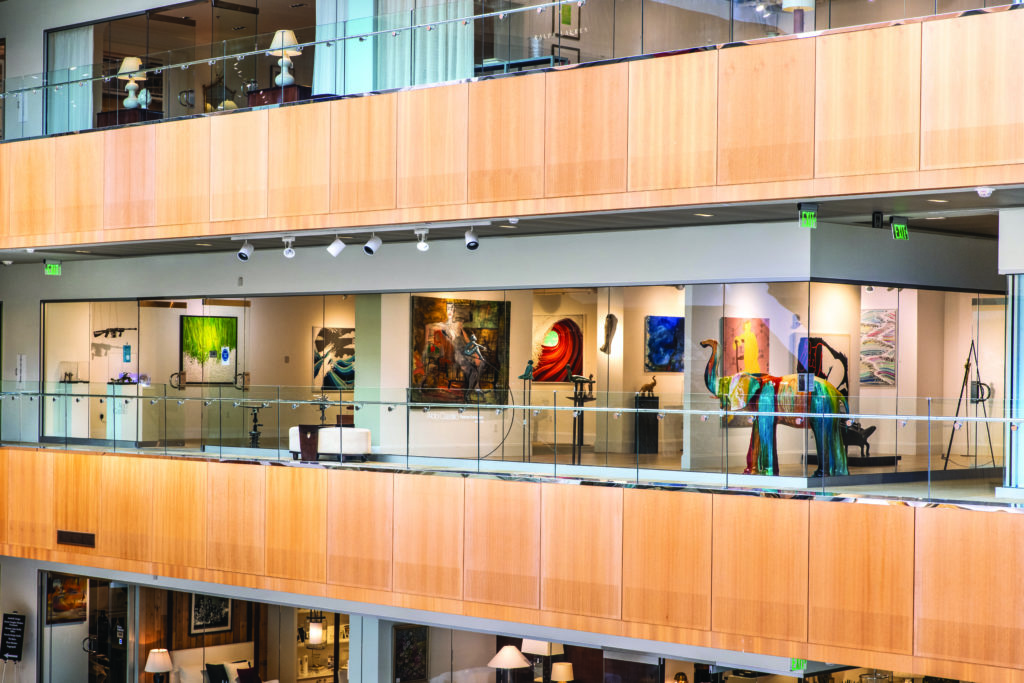
While bringing the work of innovative creatives from far-flung locales to experienced and new collectors is exhilarating, Castillo would still like to do more. He’d love to see the formation of a Naples art dealers association to help promote collaboration and connoisseurship between area galleries—especially as the region becomes the primary residence for more avid collectors. “In ancient times, people were buried with their possessions, so they could take them with them into the afterlife,” he explains. “I want to be buried with the satisfaction that I’ve made a difference in the world.”

